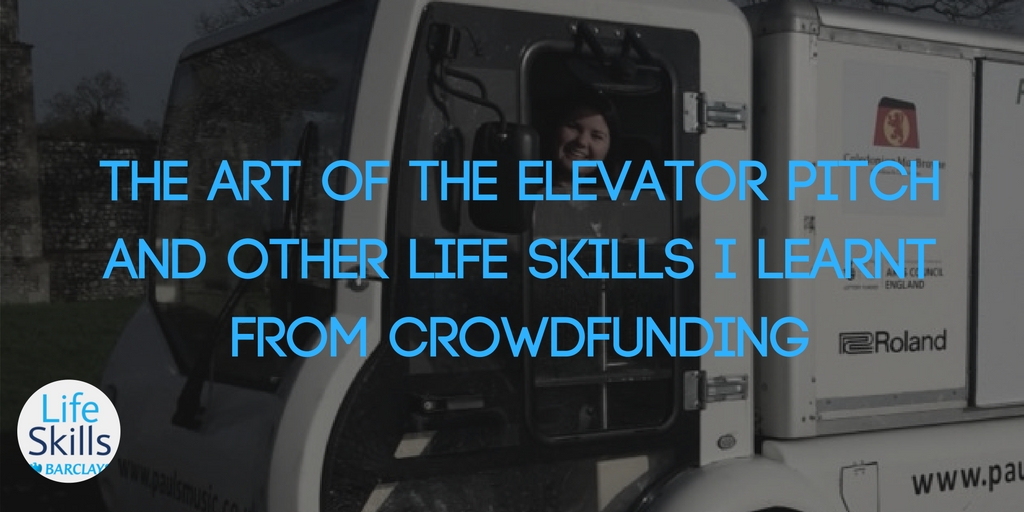Rosie, Project Creator, 19, reveals what she learnt from crowdfunding the Islington Gro-Mobile, her project to transform a milk float into a mobile classroom.
Our project isn’t something you are likely to have seen before but even more importantly it’s something you’re not likely to forget! When we set out to create the Islington Gro-Mobile we wanted to turn a disused milk float into a garden classroom on wheels. Crazy, right? But having a unique idea was just the first step, the much bigger part of our mission was to turn this idea into something people would give their hard-earned money to. Easier said than done.
Running a crowdfunding campaign was definitely a challenge, but through it I learnt a lot and since we successfully hit our target, soon you’ll be seeing the Islington Gro-Mobile on the road and that makes all the hard work worthwhile.
So here are the lessons I learned from running my campaign and hopefully they’ll help you to crowdfund your idea, no matter how weird, into reality.
- Talk about it, all the time
Yes, it might get boring, and your family might get a little fed up, but the more I talked about our project, the clearer the idea became to me, making it easier to sum up in one sentence i.e. my elevator pitch.
As I was mentioning it to people before we started fundraising, people who were interested often committed to supporting our project there and then. By having a number of funders lined up before the campaign started, it made the target way more achievable!
- Do your research
People have used crowdfunding to raise money for everything from potato salad to giant water slides so learn from what others have done. Watch their videos, read their project descriptions, look at who backed their projects and you can even use this to find organisations who might pledge to your project too. Doing this research helped us when putting together our project page and also when we were trying to identify new people to approach for funding. Double win.
- Realise the potential of social media
Whether it’s instagramming the world’s best brownie or live-tweeting the latest predictions from Bake Off, it’s easy to forget that social media also has the potential to let the world know about your awesome project idea.
Tell your friends, family and social media followers about your project, get them excited and ask them to share your project link with their network too. Before you know it, your project will be seen by hundreds of people so make sure you include a clear message to donate as well as a link to your project!
We were getting stressed at the idea of posting on social media all the time and so we used tools which helped us find the best time to post as well as allowing us schedule posts so you we could get on with the rest of our campaign! We learnt early on that our tweets and Facebook posts that had videos (short, snappy ones!) and images (bright and properly sized!) were way more effective at getting people to click and share themselves.
- All good things take time
Running a crowdfunding campaign takes time both to plan and to action. Before you start fundraising, organise your team and give everyone the jobs that best suit their skills. You’ll be so much more successful and the campaign will be that much easier if everyone is working together.
Remember some things will need more time at the beginning than others. For example, a video is a great way to sell your project (this is where your elevator pitch is very useful!) but will take some time to get right. But when it’s done, it’s done unlike other activities such as sending updates to your followers and using social media which will be continuous throughout your campaign. You might find yourself taking longer than you’d want on some aspects, but keep at it, all of your hard work will be rewarded with pledges.
- Contact anyone and everyone who might be interested
What’s the worst that could happen? They say no? Write a press release and send it to the local press, contact well known people who could be interested in your project because of where it is (e.g. they live in Islington) or what it is they’re passionate about (e.g. gardening or education), local MPs and everyone who lives in the area. Even if only a small percentage actually pledge, you’re raising awareness and getting ever closer towards your project target.
Finally, make the most of the opportunities you’re given! Barclays donated £500 to our Islington Gro-Mobile, because they’re looking to support young people develop their life skills and they loved our idea!
Growing a Greener Britain supported us with £2,500 because our project helps create green spaces, Islington Local Initiatives Fund and the Arsenal Foundation Gunners Fund gave us money because it helps the local area. Importantly SEEVS Electric Vehicle Services helped us get the milk float we needed to get on the road!
So get planning, get talking (and tweeting) and your project could be the next crowdfunding success story.

